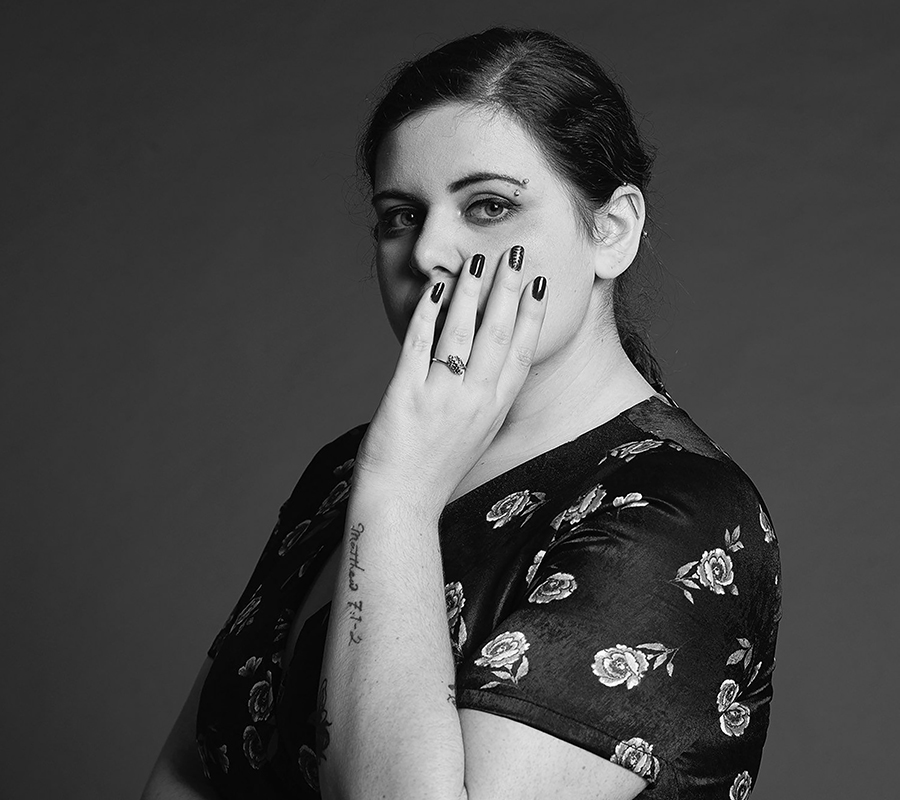
Alumna Kay Baier leads workshop that gets into the how-tos of portfolio prep
Friday, October 25th, 2019
When Kay Baier was applying to art school, she says, “I kind of knew what I was doing” when it came to preparing a portfolio — “but not a whole lot.”
And that’s pretty typical. Knowing you have to create a portfolio of your work is one thing, but knowing what to include, how to shoot your work to its best advantage, how to make use of less-than-ideal equipment or space, and how to assemble that portfolio, aren’t necessarily skills that are automatic or come naturally.
On Nov. 16, Baier will teach Portfolio Preparation: Documenting your Artwork Workshop, a 2.5-hour Continuing Education Pre-College class immediately following the College’s Fall Open House. Baier will share advice and ideas, and it’s a great opportunity for prospective PCA&D students to document some of their own work using College facilities. Though it’s perfect timing to segue from one event to the other, participants can choose to attend either or both events.

“Shine on Till Tomorrow,” Kay Baier
Workshop goals
Portfolios can be intimidating beasts, says Baier, a 2019 PCA&D graduate. If you’ve never had to take a photo of work you’ve done, or you’re armed only with the cellphone in your pocket, and you don’t have a professional lighting setup, creating images that accurately represent your work can feel out of reach.
It isn’t.
Her workshop goal is to help high schoolers use what they already have to document their artwork in an archival way.
But the first 45 minutes or so, she says, is devoted to explaining why you’d want to do so in the first place. She’ll share basics on lighting, on dpi requirements, on how to create a basic setup at home that will be sufficient for proper documentation.
“Like, you can look around and say ‘the corner of my room has good natural light’ and put a sheet up,” she says.
She’ll use a lighting studio to demonstrate a basic setup, and then workshop students can use PCA&D’s facilities and Baier’s guidance to document two or three works of their own they’ve brought along. “And we’ll work on how to do this well on a phone,” Baier says, “no need for a high-powered camera.”

“Feminine Baptism,” Kay Baier
Common mistakes
When Baier considers student portfolios, she says, there are common errors many inexperienced students make. Here are four basic tips:
* Use a tripod to ensure a steady image. The tripod also forces the student to slow down, to consider their work’s size, to ensure lighting and positioning are accurate, and to frame the artwork so no image cropping is needed afterward.
* Take more photos than you think you’ll need to choose from. Try different lighting situations.
* Don’t “accessorize.” Documenting your artwork isn’t the same as a social media post, so don’t add anything that’s not necessary to the image.
* If you’re documenting a sculpture, create a makeshift pedestal so you can take photos in 360 degrees.
Baier is in a unique position to advise students on portfolio creation; it’s not that long since she’s had to do it herself. But as a self-described “very organized person who really likes to document things,” portfolio prep is right up her alley.
Her main workshop message: “I’m here to say, ‘It’s OK guys — (portfolios) aren’t scary.
“I was in the same position as these students,” Baier says. “But four years later, after going through PCA&D, I can give them a head start.”
Visit here for more information, or to register for Portfolio Preparation: Documenting Your Artwork Workshop. Students who preregister for the PCA&D Fall Open House on Nov. 16 here will be emailed event confirmation along with a 20% off code for this $45 class.
